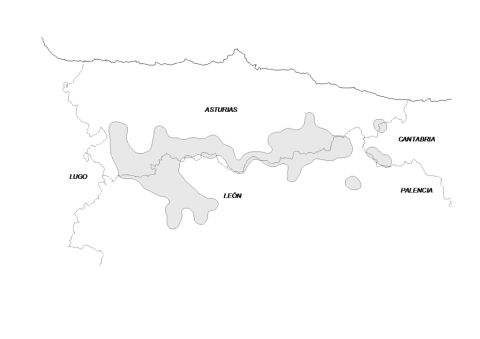You are here
Distribution
The capercaillie (Tetrao urogallus) is a forest bird of Palearctic boreal tetraonidae family, which is distributed from southwestern Europe to eastern Siberia. In recent decades, populations of most countries in which it operates have declined more or less severe, particularly pronounced in central and southern Europe.
They recognize 12 Tetrao urogallus subspecies, of which 2 are present in Spain: Tetrao urogallus cantabricus in the Cantabrian mountain range, and Tetrao urogallus aquitanicus in the French Pyrenees, Andorra and the Spanish ones. Its range covers an area of 2,000 km2 in the Cantabrian mountain range and some 5,700 km2 in the Pyrenees, in mountain areas with mature forests, heterogeneous and diverse.
Currently, the Cantabrian capercaillie is present almost exclusively in the autonomous regions of Asturias and Castilla y Leon. In Cantabria and Galicia, there are sporadic sightings, which must survive hidden in the traditional territories of these Autonomous Communities. At present we can consider that the range of the Cantabrian capercaillie is divided into two areas, East and West, separated by a large area with low population and confined to the northern slopes of the mountains:
- Eastern Core, in the Natural Parks of Caso and Ponga and the Council of Aller (Asturias), in the Regional Park of the Picos de Europa in Leon and in parts of the National Park of Picos de Europa.
- Western nucleus, in the Natural Park de las Fuentes del Narcea, Degaña and Ibias, Parque Natural Ubiñas-La Mesa and several border areas of Asturias, and the valleys of Alto Sil and Omaña in Leon.




